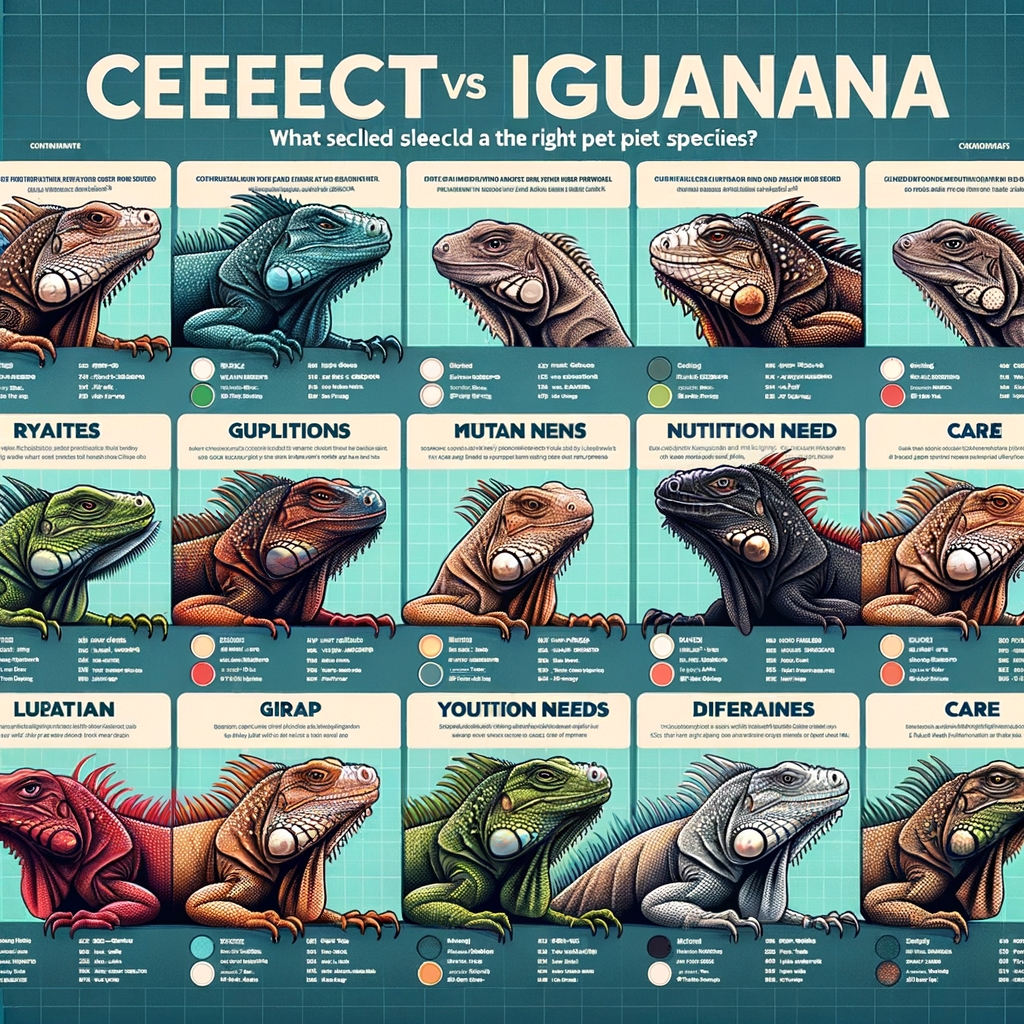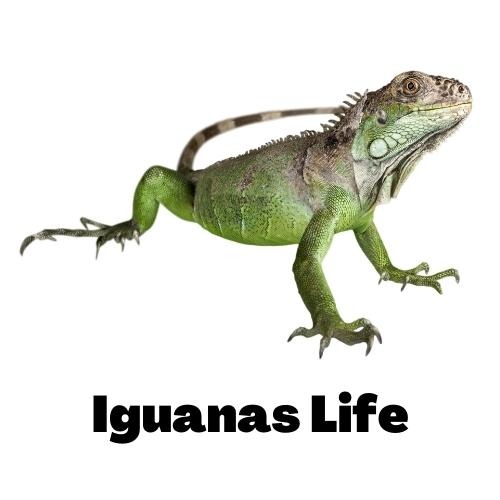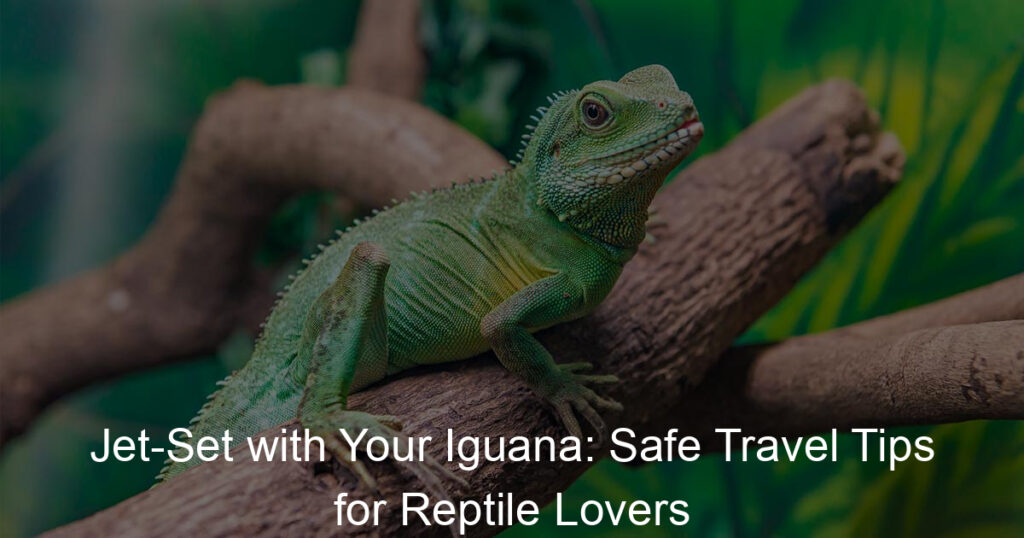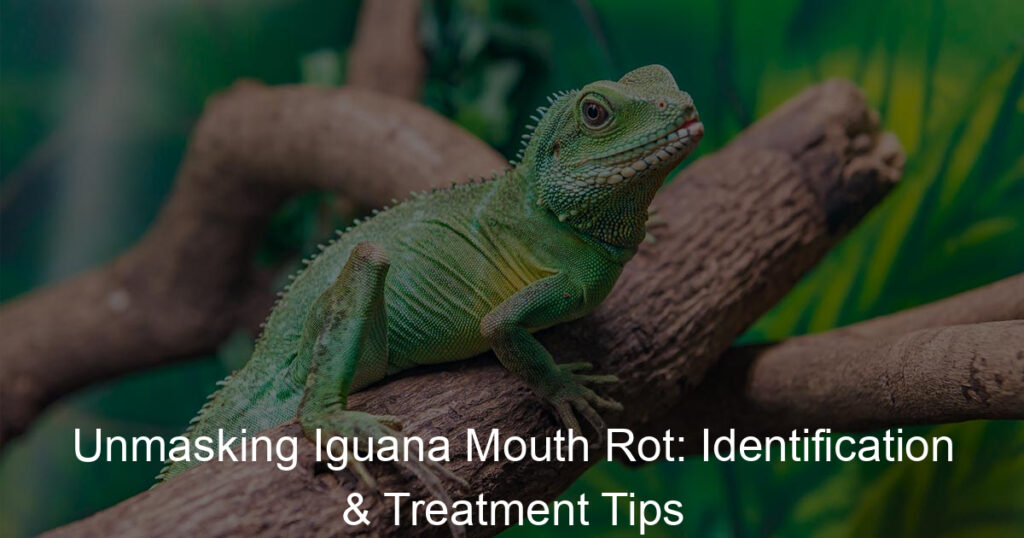
Introduction to Choosing the Right Iguana
Choosing the right pet iguana is a significant decision that requires careful consideration and planning. The type of iguana you select can have a profound impact on your experience as a pet owner. This guide will help you understand the importance of species selection and the factors to consider when choosing a pet iguana.
- Understanding the Importance of Species Selection
- Factors to Consider When Choosing a Pet Iguana
There are numerous species of iguanas, each with its unique characteristics, needs, and behaviors. The species of iguana you choose will determine the care it requires, its behavior, and its lifespan. For example, some species are more sociable and easier to handle than others, while some might require more specialized care. Therefore, understanding the different species and their requirements is crucial in making an informed decision.
When choosing a pet iguana, there are several factors to consider. These include the iguana’s size, diet, habitat requirements, and lifespan. You should also consider your lifestyle and ability to meet the iguana’s needs. For instance, larger species of iguanas will require more space and a more varied diet than smaller ones. Additionally, some iguanas live longer than others, which means a longer commitment on your part. Therefore, it’s essential to consider these factors and choose a pet iguana that fits well with your lifestyle and capabilities.
In the following sections, we will delve deeper into the different types of iguanas, compare them to help you choose the best one for you, and provide a comprehensive care guide to ensure your iguana’s health and happiness. We will also share a case study of a successful pet iguana selection to give you a real-life example of the process.
Different Types of Iguanas: An Iguana Species Comparison
When it comes to the world of iguanas, there is a wide variety of species, each with its unique characteristics and care requirements. In this section, we will focus on the Green Iguana, a popular choice among pet enthusiasts.
Green Iguana
The Green Iguana, also known as the American Iguana, is a large, arboreal species of lizard. This species is native to Central and South America and is well-known for its vibrant green color.
- Characteristics
- Care requirements
The Green Iguana can grow up to 6.5 feet in length, including its tail. They have a row of spines along their backs and tails, which helps them to protect themselves from predators. Their skin is primarily a bright green color, but it can also include shades of blue, lavender, and orange. They have long fingers and claws to help them climb and grasp branches.
Caring for a Green Iguana requires commitment and understanding of their needs. They need a large and tall enclosure, as they love to climb. Their diet should be primarily herbivorous, consisting of leafy greens, fruits, and vegetables. They require a heat lamp for basking and UVB light for vitamin D production. Regular vet check-ups are also essential to keep them healthy.
In conclusion, the Green Iguana is a fascinating creature with unique characteristics. However, they require specific care and attention, making them suitable for dedicated and experienced pet owners.
Desert Iguana
The Desert Iguana is another fascinating species in the world of iguanas. Let’s explore its unique characteristics and care requirements.
- Characteristics
- Care requirements
The Desert Iguana, scientifically known as Dipsosaurus Dorsalis, is a reptile native to the arid regions of the southwestern United States and northern Mexico. They are known for their distinctive physical features and adaptive abilities.
| Characteristic | Description |
|---|---|
| Size | They typically grow up to 16 inches (40 cm) long, including the tail. |
| Color | Their color ranges from light grey to cream, with a pattern of dark, round spots and crossbands. |
| Lifespan | With proper care, they can live up to 15 years in captivity. |
| Behavior | Desert Iguanas are diurnal (active during the day) and are excellent climbers and burrowers. |
Desert Iguanas require specific care to thrive. Here are some key points to consider:
| Care Requirement | Description |
|---|---|
| Temperature | They need a basking spot of around 110°F (43°C) and a cooler area of about 80°F (27°C). |
| Humidity | As desert dwellers, they prefer low humidity. However, a small water dish should be provided for drinking. |
| Diet | Desert Iguanas are primarily herbivores, eating leaves, flowers, and fruits. They occasionally consume insects. |
| Housing | They need a spacious enclosure with a substrate for burrowing and branches for climbing. |
Understanding the unique characteristics and care requirements of the Desert Iguana can help you provide the best environment for this fascinating creature.
Marine Iguana
The Marine Iguana is a unique species of iguana found only in the Galapagos Islands. Unlike other iguanas, they have adapted to a life in and around the sea. Let’s explore their characteristics and care requirements.
- Characteristics
- Care Requirements
Marine Iguanas are quite different from their land-dwelling cousins. They have a dark, almost black color which helps them absorb sunlight after swimming in the cold ocean. They have long, sharp claws to help them cling to rocks against strong sea currents. Marine Iguanas are also the only iguanas that can swim, and they have a flattened tail to help them move through the water. They can grow up to 5 feet long, including their tail.
Marine Iguanas are not typically kept as pets due to their specific care needs. They require a diet of marine algae and seaweed, which they dive underwater to find in their natural habitat. They also need a lot of sunlight to maintain their body temperature. If you ever come across a Marine Iguana, it’s best to admire it from a distance and leave it in its natural environment.
| Characteristic | Description |
|---|---|
| Color | Dark, almost black |
| Size | Up to 5 feet long (including tail) |
| Diet | Marine algae and seaweed |
| Habitat | Galapagos Islands |
In conclusion, Marine Iguanas are fascinating creatures with unique characteristics and care requirements. They are a testament to the wonders of nature and the adaptability of life.
Best Iguana for Pets: A Comparative Analysis
Choosing the best iguana for a pet can be a challenging task. There are many factors to consider, such as the iguana’s temperament, care requirements, and lifespan. In this section, we will compare different iguana species based on these factors to help you make an informed decision.
- Comparing iguana species based on temperament
Temperament is a crucial factor to consider when choosing an iguana as a pet. Some species are more docile and easygoing, while others can be more aggressive and challenging to handle. For instance, the Green Iguana is known for its calm temperament, making it an excellent choice for beginners. On the other hand, the Spiny-tailed Iguana can be more territorial and aggressive, requiring an experienced handler.
- Comparing iguana species based on care requirements
Care requirements vary significantly among different iguana species. Some iguanas, like the Green Iguana, require a large enclosure with plenty of climbing space, a balanced diet of fruits and vegetables, and a consistent temperature and humidity level. On the other hand, the Desert Iguana requires a hot, dry environment and a diet primarily of plants and insects. Understanding the specific care requirements of each species is essential to ensure their health and happiness.
- Comparing iguana species based on lifespan
The lifespan of an iguana can also influence your choice of pet. Some species, like the Green Iguana, can live up to 20 years with proper care, while others, like the Spiny-tailed Iguana, have a lifespan of around 15 years. The Desert Iguana has a shorter lifespan of approximately 10 years. It’s important to remember that owning an iguana is a long-term commitment, and you should be prepared to care for your pet for its entire life.
| Species | Temperament | Care Requirements | Lifespan |
|---|---|---|---|
| Green Iguana | Calm | Large enclosure, balanced diet, consistent temperature and humidity | Up to 20 years |
| Spiny-tailed Iguana | Aggressive | Large enclosure, varied diet, consistent temperature and humidity | Up to 15 years |
| Desert Iguana | Docile | Hot, dry environment, plant and insect diet | Up to 10 years |
In conclusion, choosing the best iguana species for a pet depends on various factors. It’s important to consider the iguana’s temperament, care requirements, and lifespan before making a decision. Remember, owning a pet is a long-term commitment, and you should be prepared to provide the necessary care for your iguana’s entire life.
Iguana Care Guide: Ensuring Your Iguana’s Health and Happiness
One of the most critical aspects of caring for your iguana is understanding its dietary needs. A well-balanced diet is key to ensuring your iguana’s health and happiness.
Dietary Needs
Let’s delve into the dietary needs of iguanas and the common foods they eat.
- Understanding the Nutritional Needs of Iguanas
- Common Foods for Iguanas
Iguanas are herbivores, meaning they eat plants. They require a diet rich in calcium and low in phosphorus. A good diet for an iguana should consist of 50% green leafy vegetables, 40% other vegetables, and 10% fruit. It’s important to note that iguanas should not be fed animal protein as it can lead to kidney failure.
Common foods for iguanas include collard greens, mustard greens, dandelion greens, and other leafy greens. They also enjoy squash, peas, and parsnips. Fruits like apples, bananas, and strawberries can be given in moderation. Always remember to wash the fruits and vegetables thoroughly before feeding them to your iguana.
Feeding your iguana a balanced diet is crucial for its overall health. It helps prevent diseases and ensures your iguana lives a long and happy life.
| Food Type | Percentage in Diet |
|---|---|
| Green Leafy Vegetables | 50% |
| Other Vegetables | 40% |
| Fruits | 10% |
Remember, every iguana is unique and might have different dietary preferences. It’s always best to observe your iguana’s eating habits and consult with a vet if you notice any changes in its appetite or health.
Habitat Requirements
Just like us, iguanas need a comfortable and safe place to live. This section will guide you on how to create a suitable living environment and manage temperature and humidity control for your pet iguana.
- Creating a Suitable Living Environment
Creating a suitable living environment for your iguana is crucial for its health and happiness. Iguanas are arboreal creatures, which means they love to climb. Therefore, their habitat should include branches or other structures for climbing. The size of the habitat should also be spacious enough for your iguana to move around freely. A small, cramped space can lead to stress and health problems for your iguana.
It’s also important to keep the habitat clean. Regular cleaning helps prevent the spread of bacteria and disease. Use a safe, non-toxic cleaner and make sure to thoroughly rinse and dry the habitat before your iguana returns to it.
- Temperature and Humidity Control
Iguanas are cold-blooded animals, which means they rely on their environment to regulate their body temperature. Therefore, it’s essential to maintain a suitable temperature in their habitat. The ideal temperature range for an iguana is between 75 and 85 degrees Fahrenheit during the day and slightly cooler at night.
Humidity is another important factor for iguanas. They come from tropical environments where the humidity is high. Therefore, their habitat should maintain a humidity level of around 70%. You can achieve this by misting the habitat with water daily or using a humidifier.
Remember, creating a suitable habitat for your iguana is a key part of ensuring its health and happiness. By paying attention to these details, you can provide a home for your iguana that meets its needs and keeps it comfortable.
Case Study: Successful Pet Iguana Selection
Choosing the right pet iguana can be a challenging task, especially if you’re new to the world of reptiles. To help you make an informed decision, we’ve compiled three case studies that highlight the process of selecting different types of iguanas. Each case study provides insights into the unique needs and characteristics of these fascinating creatures.
- Case study 1: Choosing a Green Iguana
- Case study 2: Choosing a Desert Iguana
- Case study 3: Choosing a Marine Iguana
Green Iguanas are one of the most popular choices for pet owners due to their vibrant color and sociable nature. In this case study, we follow the journey of a family who decided to adopt a green iguana. They researched extensively about the dietary needs, habitat requirements, and common health issues of green iguanas. They also consulted with a vet who specializes in reptiles to ensure they could provide the best care. The family’s dedication to understanding their pet’s needs led to a successful adoption and a happy, healthy green iguana.
Desert Iguanas are known for their resilience and adaptability. In this case study, a reptile enthusiast chose a desert iguana as his pet. He made sure to replicate the desert environment in his home, providing plenty of heat and light for his new pet. He also learned about the desert iguana’s diet, which consists mainly of plants and insects. His careful planning and attention to detail resulted in a thriving desert iguana that enjoys its new home.
Marine Iguanas are unique as they are the only sea-going lizards in the world. This case study follows an experienced reptile keeper who decided to take on the challenge of caring for a marine iguana. She invested in a large tank to mimic the iguana’s natural ocean habitat and fed it a diet of seaweed, its primary food source in the wild. Her commitment to replicating the marine iguana’s natural environment has led to a healthy and content pet.
These case studies highlight the importance of understanding the specific needs of different iguana species before making a selection. Whether you’re drawn to the sociable green iguana, the resilient desert iguana, or the unique marine iguana, thorough research and preparation are key to a successful pet iguana selection.
Key Takeaways: Guide to Owning an Iguana
As we reach the end of our comprehensive guide on owning an iguana, let’s recap the most important points. These key takeaways will help you make an informed decision and ensure you provide the best care for your new pet.
- Understanding the Commitment
- Choosing the Right Species for Your Lifestyle
- Providing Proper Care for Your Iguana
Owning an iguana is a long-term commitment. These creatures can live up to 20 years in captivity, and they require daily care and attention. You’ll need to provide a suitable habitat, feed them a balanced diet, and take them to the vet for regular check-ups. Remember, owning a pet is not just about the fun times; it’s about caring for them even when it’s challenging.
Not all iguanas are the same. Some species are more suitable for beginners, while others require a more experienced hand. The Green Iguana, for example, is a popular choice for first-time owners due to its calm demeanor and manageable size. On the other hand, the Blue Iguana is larger and more demanding, making it a better fit for experienced owners. Consider your living situation, available time, and level of experience before making a decision.
Proper care goes beyond feeding your iguana and cleaning its habitat. It also involves monitoring its health, providing mental stimulation, and ensuring it gets enough exercise. Iguanas need a diet rich in leafy greens and vegetables, a spacious enclosure with climbing opportunities, and regular interaction with their owners. They also need UVB lighting to synthesize vitamin D and absorb calcium. Regular vet visits are crucial to detect any potential health issues early.
In conclusion, owning an iguana is a rewarding experience, but it’s not a decision to be taken lightly. By understanding the commitment, choosing the right species, and providing proper care, you can ensure a happy and healthy life for your pet iguana.













